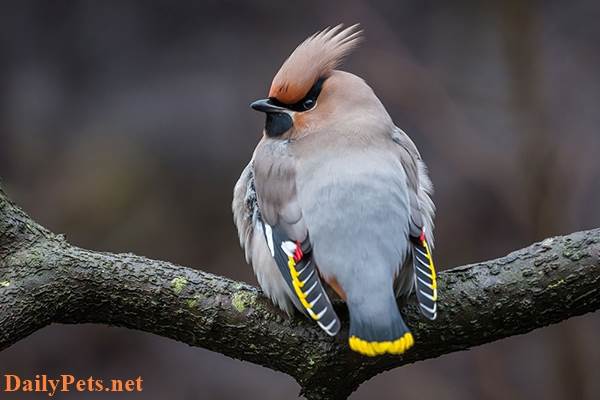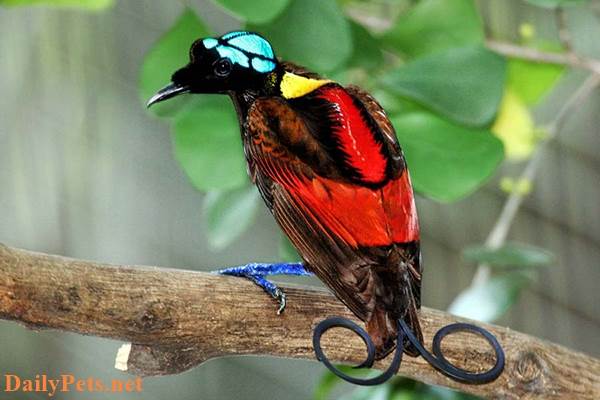Although it is a familiar bird, not everyone can fully understand it. To learn more interesting things about Starlings, let’s find out with DailyPets.net through this article.
What is Starling?
The Starling (scientific name: Lonchura punctulata) is a species of bird in the Starling family (Estrildidae), widely distributed in Asia and Africa.
According to research, the flute is diverse in species, with nearly 30 species living in many regions worldwide.
What does a Starling look like?
To identify the Starling easily, you need to know the typical characteristics below.
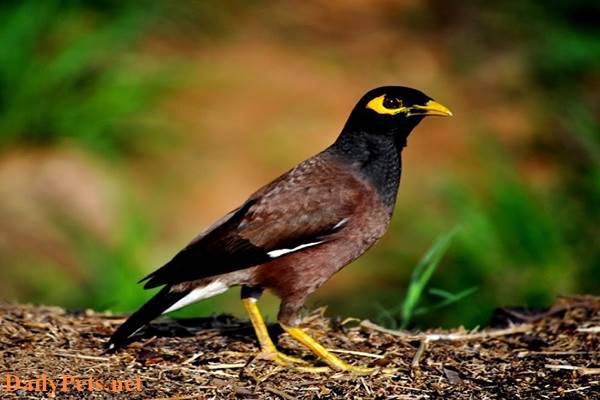
A Starling Bird.
Body size
The Starling is a small but sturdy bird. The size of an adult Starling is only about 15 to 30 cm, and it weighs 35 to 220g. With such an extremely small size, the Starling can move very quickly when flying.
Head
The Starling has a small and flat head. The most prominent feature on Chim Sao’s face is its sharp, hard, and bright yellow beak. The Starling’s eyes are very large and clear and have a golden border around the eyes. Normally, the eyes of Starling species depend mainly on the color of the feathers and have two prominent colors: black or brown.
Neck
Compared to other birds, the Starling bird has a rather long neck. Thanks to this feature, the Starling bird always has a standing posture with an outstretched chest and a straight back that looks haughty and arrogant.
Wings and legs
Despite possessing a small body, the wings of this bird are quite long and strong. Thanks to such wings, the Starling bird can fly in the sky for a long time without getting tired. One feature of the Starling bird is that it does not fly around like other birds but flies in a straight line. The Starling has long, slender legs with three long toes in front and one small toe in the back. The Starling bird’s toes all have sharp claws that allow it to perch on tree branches.
Feather
Starlings’ feathers consist of 2 layers. The outer coat is usually long and stiff, especially the feathers on the wings and tail. Because these are the two main parts that help the Starling bird control the direction of flight and resist the wind, they are relatively sturdy. Their inner coat is usually soft and lighter in color than the outer coat.
The Starlings’s feathers have many different colors. Each breed of bird has its distinct plumage. This bird has three popular colors: black, brown, and star-spotted blue.
Can Starlings talk to humans?
If talking about birds that can talk, people will surely think of parrots because they can imitate human voices. But in fact, there is another bird that also has this ability, which is the Starling. The Starlings can imitate human speech very well. Besides, the Starling can also simulate the sounds emanating from the surroundings in which it lives.
Types of Starlings that Are Popular Today
As introduced at the beginning, there are about 30 species of Starling in the world today, and each species has its own characteristics. But in this article, DailyPets.net will provide information on some popular species today.
Blue Starling
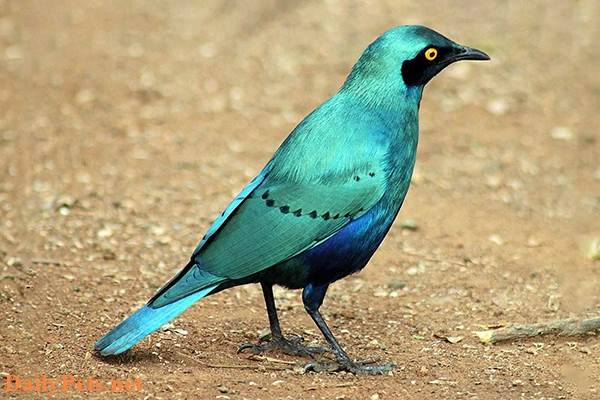
A Blue Starling.
The blue Starling is native to West Asia and was found in 1785. Characteristics of the blue Starling:
- This flute breed has a relatively large body size; the adult size can be 20-25cm long.
- The average weight of blue Starlings ranges from 55g to 100g.
- Male Starlings are generally larger in body size than females.
- This type of flute has very strong legs and is slightly reddish pink in color.
- The beak of the male Starling is usually greenish-gray, and the female’s beak is usually yellow. Especially when young, the beak and plumage are often brown. As they mature, their plumage turns blue with white star spots. The spots of male Starlings are usually thicker than that of females.
Black Starling
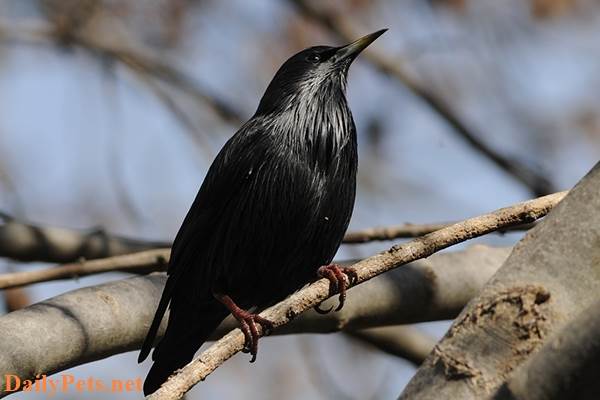
A Black Starling.
Black Starlings are not outstanding in appearance but are friendly and easy to teach. This bird has the following identification features:
- Like a crest, the hair on the head’s top looks majestic and majestic.
- The beak and legs of this species are golden yellow with shiny black fur.
Brown Starling
This is one of the popular bird breeds in Vietnam. The Brown Starling was founded in 1766 and distributed mainly in the Indochina peninsula.
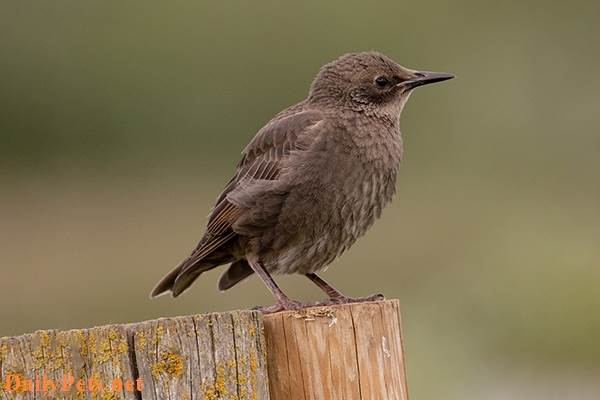
A Brown Starling.
This bird has the following characteristics:
- The brown Starling has a well-balanced body between the head and the human.
- The brown Starling’s head, neck, and tail are glossy black. Their chest is usually grayish brown, in the back, and wing feathers are usually light brown. And at the edge of the wing, feathers are black and white.
- The brown Starling’s eyes are quite round, with a pale yellow rim around the eyes and a red inner color.
How to take care of Starling birds
What do Starlings eat?
Starling is a bird that is not too picky in its diet. Like other ornamental birds, fresh foods such as locusts, grasshoppers, worms, etc., are indispensable “foods” for Starlings. In addition, for the Starling bird to have a more comprehensive development, farmers need to supplement foods containing fiber, such as bananas and peanuts,…
However, it is not always possible to find fresh bird food. Instead, you can also feed the Starling with nuts. You can also buy dried worms, grasshoppers, and locusts at pet food stores.
In addition to using available foods, you can also make your food for Starlings according to the following recipe:
Take 500g of specialized bird feed or chicken bran. Next, take 4 egg yolks. And finally, add a little honey and beef. Mix this mixture, dry it, and add a little vitamin B complex to feed the birds.
If the Starling bird is not used to eating bran, you can let the bird get used to eating bran. You should feed the bird bran with dry worms on the first days. At first, you should feed birds from 10% bran with 90% worms; then, in the following days, you increase the rate of bran gradually. When you get used to the smell of bran, you can feed the birds with the above diet.
Starling Cage
Usually, people choose feathers made from bamboo or rattan to suit the weather. Because this bird likes to fly, you need to choose a cage with a large space so that they have enough space to operate without feeling cramped and uncomfortable.
Inside the cage, you can design a tray for water and millet for the babies. Especially the cage lock part, you must design it very firmly because the Starlings can open the latch with their beak! So design a buckle on the Starling’s feathers if your bird is smart.
Location of Starling cages
People should place the cage in the Southeast-South direction because this position will ensure cool summer air and warm winter. Moreover, you should only let the birds go out in the sun early in the morning; when the sun is up, you have to hang them in shady places. Moreover, people should prepare a curtain in winter to block the wind.
Symptoms and ways to prevent diseases for Starlings
When you see broken, pasty, not dry, often stuck to the bird’s feet or the bottom of the cage, your bird has diarrhea. The cause of this problem is that farmers feed too much meat or bran mixed with water for a long time to ferment, or the bran is moldy or termite. To cure this condition, you only need to take 1/4 of a berberine tablet of about 1g mixed with water in the cellar for the flute to drink during the day, continuously for five days.
The next phenomenon you can see is the frizzy feathers and harmful parasites clinging to the feathers. To stop this situation, you must first clean the cage for the flute and change the bottom of the cage every 2 days. Then, give the bird a bath with diluted salt water and let it dry in the sun for about 15 minutes.
Starlings raised in cages are supplemented with a lot of fat and protein, thus making them slow, inactive, and inactive. This can lead to the sudden death of Starlings. That’s why you need to let your Starlings sunbathe every morning and feed them in moderation.
If the climate is cold and you don’t wear a cage or winter, there is no sun after bathing. At that time, the flute phenomenon began to sneeze with shaggy feathers, and the whole body trembled. The flute will get pneumonia. Therefore, before going to bed, you should cover the cage to avoid cold, keep the flute in a warm place, and mix sugar water into a glass of water.
How to teach Starlings to talk
In order for a Starling to speak and imitate human voices, you need some time to train them. Here are some tips to help Starlings speak quickly and easily:
It is advisable to raise the Starlings from a young age and keep them in a cage for a while before starting to guide them. And when you get used to it, you will teach them how to speak.
What is the price of Starling?
Starling bird prices are currently very interesting in the market today. Starling’s prices will be segmented differently depending on many factors, such as color, type, health, and size. On average, the price of a Starling breed ranges from $100 to $200 each. When looking to buy Starlings, you can refer to the detailed price list from sales specialists.

